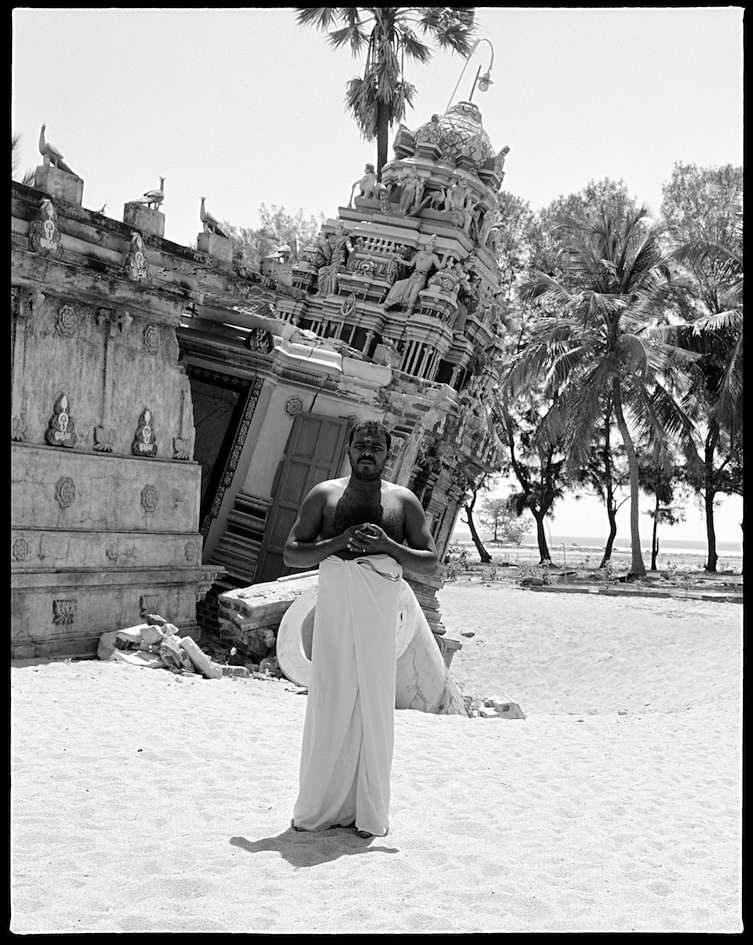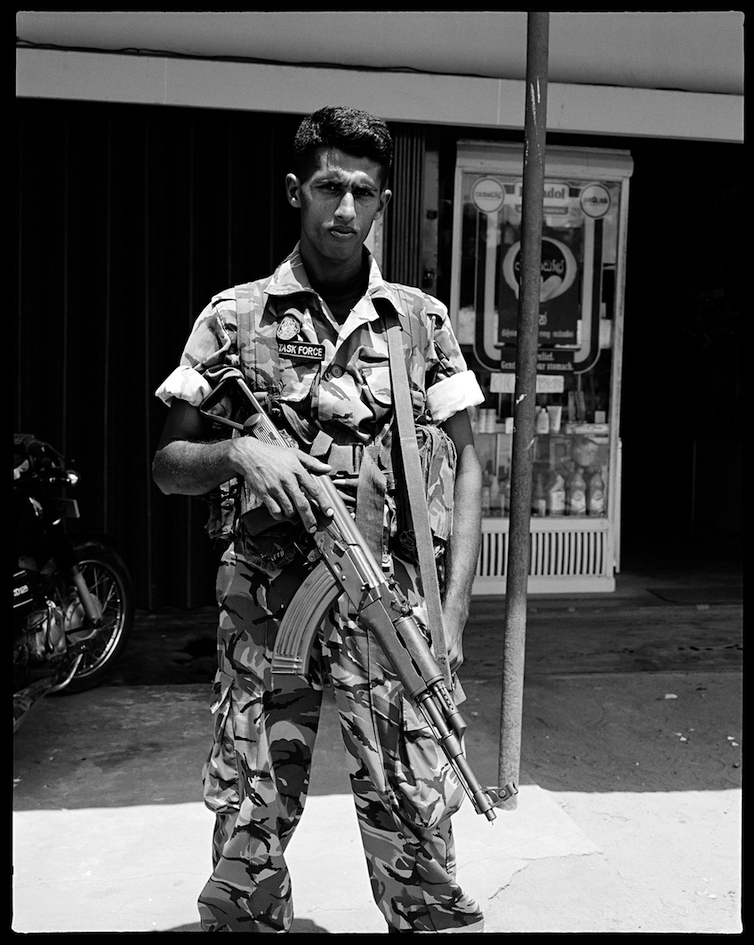A glimpse inside a turbulent period in Sri Lankan history
- Text by Miss Rosen
- Photography by Hunter Barnes

In early spring 2006, American photographer Hunter Barnes traveled to Sri Lanka. He’d gone there to document the devastating impact of the 2004 tsunami that had left more than 35,000 dead – only to arrive as civil war was flaring back up.
The island nation, which achieved independence in 1948, had been embroiled in war since 1983, when the Tamil people in the north and east began their fight for emancipation from the Sinhalese majority. Although a ceasefire had been established in 2002, there was an assassination attempt on a military general shortly before Barnes arrived.

“You could feel the tension in the air,” Barnes remembers after touching down in the capital city of Colombo after a two-day flight. A friend of Barnes met him at the airport with a warning: it was unsafe to travel at night. They waited until sunrise to make the journey.
“As we drove across to the east, the checkpoints became more prevalent,” Barnes says. “Once we arrived in the eastern province, I realised I was meant to document the lives of the people living through this situation day to day.”
In the new book, A World Away (Reel Art Press), Barnes brings together poignant black and white photographs and handwritten notes from his time on the island with children, families, and humanitarian workers banding together to survive the aftermath of natural disaster and resurgence of war. 

Barnes began his work photographing a school for orphans. At the time he was shooting, only 200 of the 700 students made it in due to a military outbreak on the street. But those who arrived were excited to be photographed and share their stories.
Barnes then visited refugee camps funded by the Tamil Rehabilitation Organisation, where people lived in huts made of sheet metal with palm roofs. These huts soared to harrowing temperatures under the equatorial sun. Water and rice were trucked in periodically to the camps.
The photographer noticed things were going from bad to worse. “The tsunami destroyed so many things: families, homes and resources. There was a shortage of food, the fish in the ocean were greatly affected. The drinking water from the many of wells became unsuitable to drink,” Barnes says.


“During the time of the cease fire there was a focus on rebuilding. When the war began again much of what was being rebuilt was destroyed. As more time went on and the war started its resurgence the camps population greatly increased as well as the military presence in the area.”
With the conflict escalating, Barnes had to leave sooner than he planned but he continued to make work, photographing the military, the fishermen, then families, and children he encountered in order to share their story.
With the first open elections soon to come, the violence was escalating. Bombs were getting closer and a girl Barnes knew was shot in the street. Just before he left the country, a preacher said, “Twenty–thirty years ago, Sri Lanka was considered ‘The Pearl of the East.’ Now it’s considered ‘The Hell of the East.’”





A World Away is out now on Reel Art Press.
Enjoyed this article? Follow Huck on Twitter and Instagram.
You might like

“Humanity’s big threat is our disconnect from nature”: Craig Richards and Chris Levine in conversation
Lighting up — With Houghton Festival collaborating with artist Chris Levine in its most recent edition, we sat down with the light artist and the festival’s creative director Craig Richards to chat about their new installations, and the role of art and music in tumultuous times.
Written by: Isaac Muk

Three heart wrenching poems from Gaza
Writings that narrate — With Gaza’s population facing starvation, we are handing over our website to Yahya Alhamarna, a displaced poet and student in Gaza, who shares some of his recent poetry, and explains why writing is so important to him.
Written by: Yahya Alhamarna

Throwback portraits of the UK’s first punks
Punks 1978-1980 — While working as a photographer in the army, Wayne “Spike” Large would moonlight as a punk on the weekends. His new photobook revisits the characters that he captured from the genre’s heyday.
Written by: Miss Rosen

Meet Lady Pink, the ‘First Lady’ of graffiti
Miss Subway NYC — As a leading writer and artist in a man’s world, Sandra Fabara has long been a trailblazer for girls in underground art. Now, her new show touches on her legacy, while looking to the future.
Written by: Isaac Muk

Will internet age verification actually work?
VPN Summer — With the Online Safety Act coming into force over the weekend, the UK woke up to find pornography, but also any content deemed “harmful” hidden behind an ID wall. But young people are far too tech savvy to be deterred, explains newsletter columnist Emma Garland, who also warns of the dangers of mass data harvesting.
Written by: Emma Garland

Love and rage at the record shattering London Trans+ Pride 2025
Dismantle the cis-tem — With over 100,000 attendees, the Saturday march was the largest trans pride event ever in world history. Cheer Up Luv’s Eliza Hatch captured the action, and recounts its powerful energy.
Written by: Eliza Hatch / @cheerupluv

